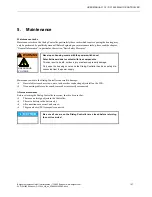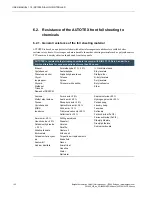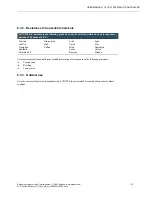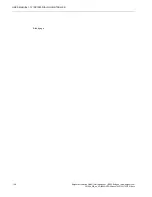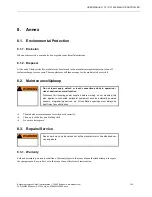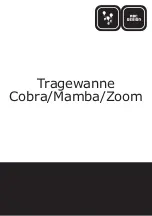
USER MANUAL 1.10 | DC1000 DIALOG-CONTROLLER
Berghof Automation GmbH | Harretstrasse 1 | 72800 Eningen | www.berghof.com
DC1000_HB_en_2D0982010ZD00.docx | 2VF100123FE04.docx
134
6.3. Resistance of the AUTOFLEX- front foil sheeting to
chemicals
6.3.1. General resistance of the foil sheeting material
AUTOFLEX is based on a polyester foil sheet with a biaxial arrangement and therefore exhibits better
resistance to solvents. It is stronger and more durable than other sheeting materials such as polycarbonate or
PVC, commonly employed for touch pads and front face panels.
AUTOFLEX is resistant to the following chemicals in accord. with DIN 42 115, Part 2, and will ex-
hibit no alterations for exposure periods of more than 24 hours:
Ethanol
Cyclohexanol
Glycol
Isopropanol
Glycerin
Methanol
Acetaldehyde
Aliphatic hydrocarbons
Toluene
Xylene
Ethyl acetate
Diethyl ether
Acetone
Methyl ethyl ketone
Dioxan
Formic acid < 50 %
Acetic acid < 50 %
Phosphoric acid < 30 %
Hydrochloric acid < 10 %
Nitric acid < 10 %
Sulfuric acid < 10 %
Sodium chloride < 20 %
Hydrogen peroxide < 25 %
Potash soap
Laundry soap
Softeners
Ammonia < 2 %
Caustic soda < 2 %
Alkali carbonate
Bichromate
Potassium
ferrocyanide
Drilling emulsions
Diesel oil
Varnish
Paraffin
Castor oil
Silicon oil
Turpentine oil replacements
AUTOFLEX is resistant to glacial acetic acid in accordance with DIN 42 115, Part 2, for exposure times of
< 1 hour and will exhibit no visible damage.
CAUTION
The product is not resistant to the following chemicals and impact may
damage the front foil:
Concentrated mineral acids
Concentrated alkaline solutions
Benzyl alcohol
Methyl alcohol
High pressure steam above 100 °C
SURFACE
RESISTANCE








